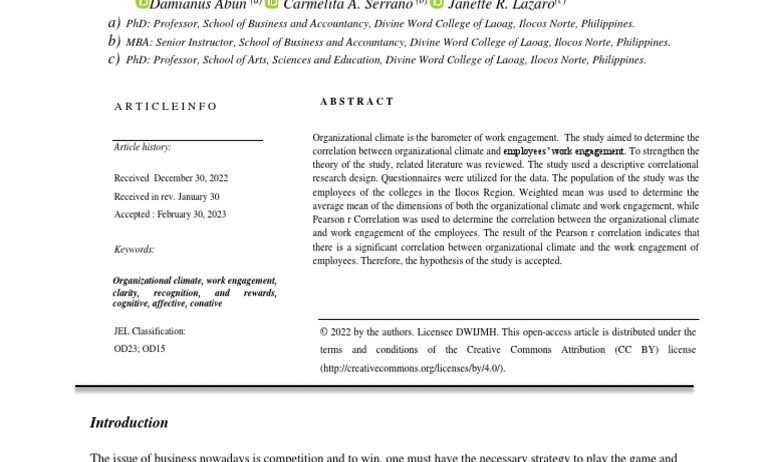Organizational climate is akin to the invisible atmosphere enveloping an organization. Just as a garden thrives in the right weather conditions, employees flourish within a positive organizational climate. This intricate web of shared perceptions, beliefs, and practices influences not only how employees feel but also how they perform. It casts a profound shadow over productivity, collaboration, and employee engagement.
To fathom the essence of organizational climate, it is crucial to differentiate it from organizational culture. While culture embodies the ingrained ideologies and values that shape an organization’s identity over time, climate represents the prevailing moods and emotional tone that employees experience daily. Think of culture as the soil in which the seeds of an organization are sown, while climate serves as the weather that impacts how those seeds grow. Both elements interplay to create the overall ecosystem of the workplace.
Establishing a positive organizational climate requires meticulous attention to various factors, much like gardeners nurturing their plants. Leadership, communication, employee recognition, and work-life balance all contribute to the vibrancy of this environment. Effective leadership acts as the sunlight that nurtures growth. Leaders set the tone from the top, influencing how information flows and how employees perceive their roles within the organization.
Effective communication is akin to the gentle rain that nourishes an organization. Transparent communication threads together the fabric of trust and ensures that employees feel valued and heard. Regular feedback, open-door policies, and inclusive decision-making processes cultivate an atmosphere of openness, resulting in enhanced collaboration and reduced misunderstandings.
Equally important is the practice of recognizing and rewarding employee contributions. Much like the little rewards that a gardener receives when new blooms burst forth, acknowledging achievements, both big and small, fosters motivation and engagement. Recognition can take many forms, from formal awards to simple verbal appreciation. It reinforces positive behaviors, ensuring that employees understand their value within the larger tapestry of the organization.
Work-life balance constitutes another pillar supporting the edifice of organizational climate. A healthy balance between professional obligations and personal lives acts as a stabilizing force, providing employees with the energy and focus necessary for optimal performance. Just as a well-watered plant is less susceptible to disease, employees who feel supported in achieving a work-life balance are more resilient and engaged.
Moreover, inclusion and diversity are vital components that further enrich the organizational climate. An inclusive environment, one that welcomes diverse perspectives and backgrounds, enables organizations to tap into a broader wellspring of creativity and innovation. It is analogous to introducing a variety of plant species in a garden, which leads to a more vibrant and resilient ecosystem. By embracing diversity, organizations foster an environment that challenges the status quo and encourages newer, innovative ideas to blossom.
Furthermore, the physical space in which employees operate also significantly impacts the organizational climate. Open and inviting workspaces often promote collaboration and communication, while cramped, uninspiring environments can stifle creativity and hinder morale. Designing office spaces that reflect the organization’s values and support the work styles of employees provides the backdrop against which the organizational climate unfolds. For instance, areas that facilitate teamwork—like breakout spaces and communal lounges—can breathe life into organizational dynamics, creating interaction points that transcend departmental silos.
Just as a gardener must consistently tend to their plants, so too must an organization continuously assess and adjust its climate to accommodate the evolving needs of its workforce. Regular assessments, surveys, and focus groups can yield invaluable insights into the prevailing sentiments and pinpoint areas for improvement. By showing a commitment to evolving the organizational climate, leaders demonstrate their dedication to cultivating an environment where all employees can thrive.
It is also important to understand that building a positive organizational climate is not merely a one-off endeavor but a sustained commitment that requires ongoing effort from all levels of the organization. Just as gardens are subject to the changing seasons, organizational climates can fluctuate in response to internal and external pressures. Therefore, resilience and adaptability must be woven into the fabric of the organizational mindset, allowing it to navigate challenges gracefully without sacrificing its core values.
In conclusion, organizational climate is a dynamic and multifaceted aspect of the workplace that plays a crucial role in determining employee satisfaction and organizational success. It requires deliberate and thoughtful cultivation, much like a garden. By fostering leadership, open communication, recognition, work-life balance, diversity, and a conducive physical environment, organizations can create a thriving climate that nurtures talent, boosts morale, and accelerates productivity. In an era where employee engagement and well-being are increasingly recognized as integral to organizational success, investing in a positive organizational climate is no longer optional; it is essential.








